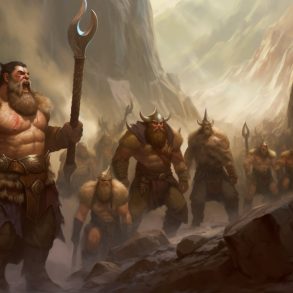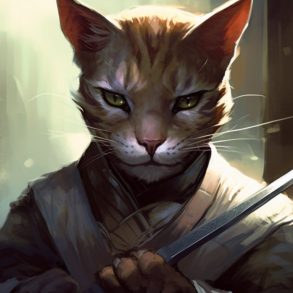Dungeons & Dragons has featured many infamous oozes since its inception in 1974, and since then, there has always been a subset of the player base wanting to play a heroic version of the slimy dungeon denizens. Now, 5E has its own ooze player race, so melt back in your chair as this article explains everything you need to know about the Plasmoid.
Unusual anatomy
Plasmoids lack a skeleton and conventional flesh; instead, their bodies function similar to an extremely large amoeba. Their rigidity comes from the stiffening of the outermost layers of their body, allowing them to take on various shapes to fit their needs. However, when sleeping, they lose this rigidity and spread out like a blob. It’s common for them to be mistaken for a part of their environment whilst sleeping.
A plasmoid consumes food and water through phagocytosis and osmosis, respectively, similar to how single-cell organisms do. Their waste is then excreted through small pores, they intake oxygen through another set of pores. Plasmoids lack not only a skeleton, but also traditional organs a humanoid might have. Instead, their body is made up of fibers, cells, and ooze, with clusters of nerves replacing the function of many sensory organs. These nerves allow a plasmoid to detect heat, light, sound, texture, pain, and vibrations. Although they lack a mouth, plasmoids do not rely on telepathy to communicate like other races. Instead, they create tubular cavities that form sound how they desire by forcing air through them like a malleable wind instrument.
In their natural form, most plasmoids are a translucent gray blob, however, they often assume a shape similar to those they interact with, their created limbs strong enough to manipulate objects and wield weapons and bodys firm enough to wear clothing. Some plasmoids choose to alter their color and translucence by absorbing different dyes through their pores, similar to how other races may change their outfit or make-up.
Skeletons are so last edition: Playing a plasmoid
Playing a plasmoid gives you the following traits:
Ability Scores – You can increase one ability score by 2 and a different score by 1; alternatively, you can increase three different ability scores by 1.
Size – Small or Medium, your choice.
Creature Type – Ooze
Speed – 30 ft.
Age – The typical life span of a player character in the D&D multiverse is about a century, assuming the character doesn’t meet a violent end on an adventure.
Darkvision – You can see in dim light within 60 feet of you as if it were bright light, and in darkness as if it were dim light. You can’t discern color in darkness, only shades of gray.
Amorphous – You have advantage on ability checks to escape or initiate a grapple. Additionally, as long as you are not wearing or carrying anything, you can squeeze through any gap 1 inch or wider.
Hold Breath – You can hold your breath for an hour, instead of the PHB standard.
Natural Resilience – You have resistance to acid damage, poison damage, and advantage on saving throws against being poisoned.
Shape Self – You can use an action to give yourself humanoid features, such as up to two of each arms, legs, hands, and feet. Whilst shaped like a humanoid, you can wear armor and clothes made for humanoids. Alternatively, you can revert to a limbless blob.
Additionally, you can use a bonus action to produce a pseudopod or retract an existing pseudopod back into your body. This limb can be up to 10 ft. long and 6 inches wide, it is unable to attack, lift more than 10 lbs, activate magic items, and doesn’t contain any of your sensory nerves. You can use this pseudopod to open or close a door or container, manipulate an object, or pick up/put down a tiny-sized object.
Languages – You can speak, read, and write Common and one other language that you and your DM agree is appropriate for your character.
We hope that you’ve enjoyed squeezing through keyholes with the plasmoid as much as we have. Have you played a plasmoid yet? Are you planning to? If you want to learn more about other race options, check out our races section, or if you want to understand the world’s greatest roleplaying game better, then check out our how to play section. Good luck out there adventurers, and until next time, remember, mitochondria are the powerhouse of the cell!






